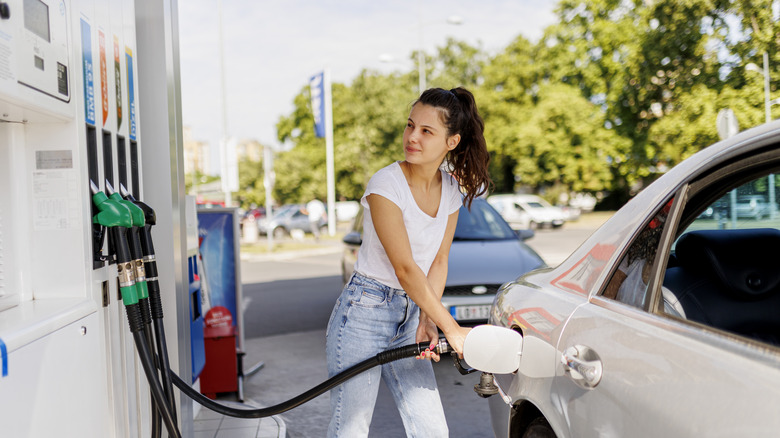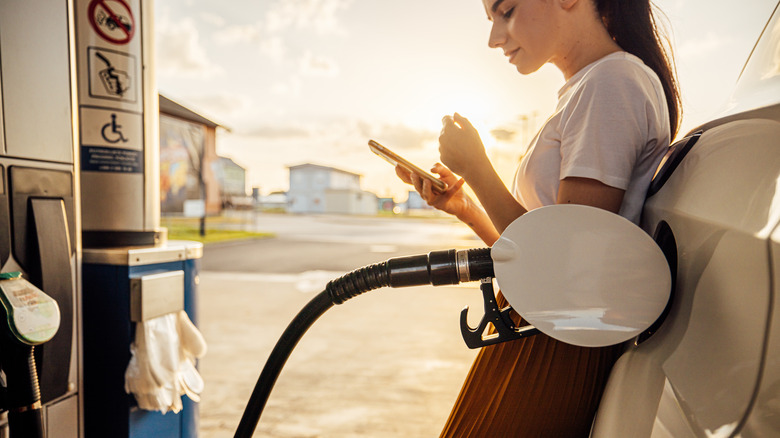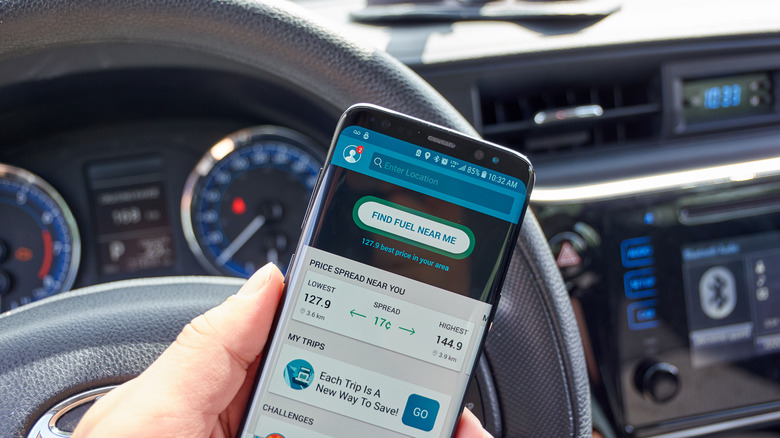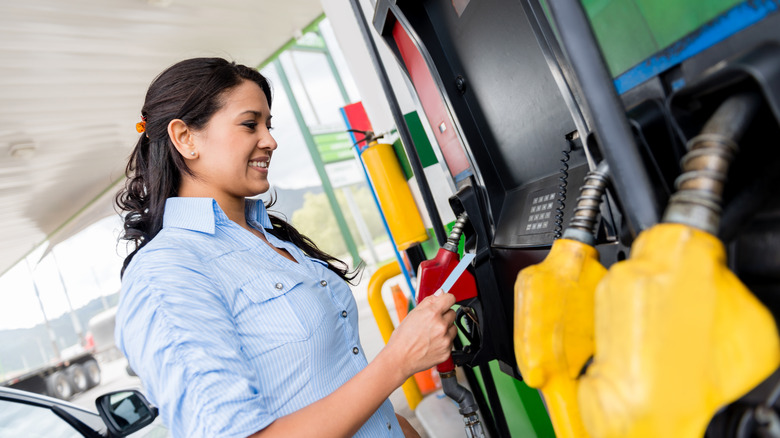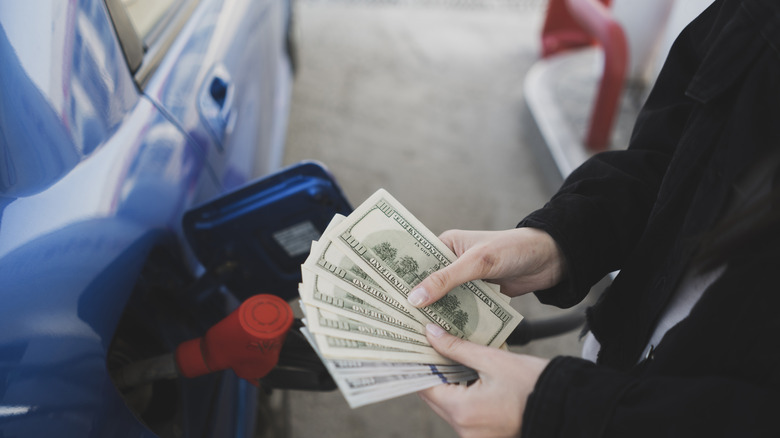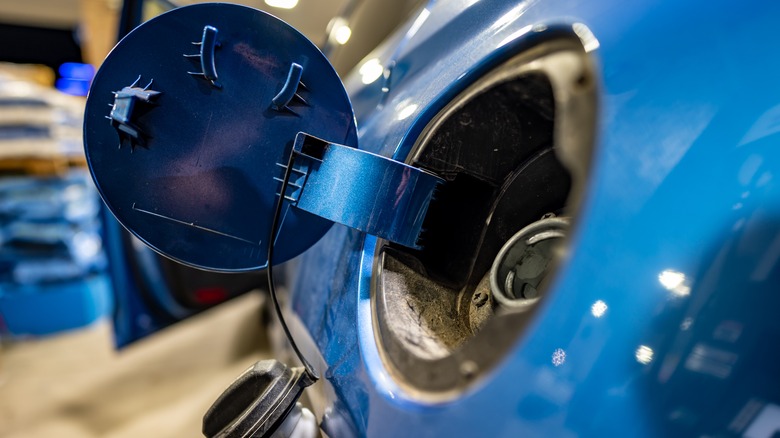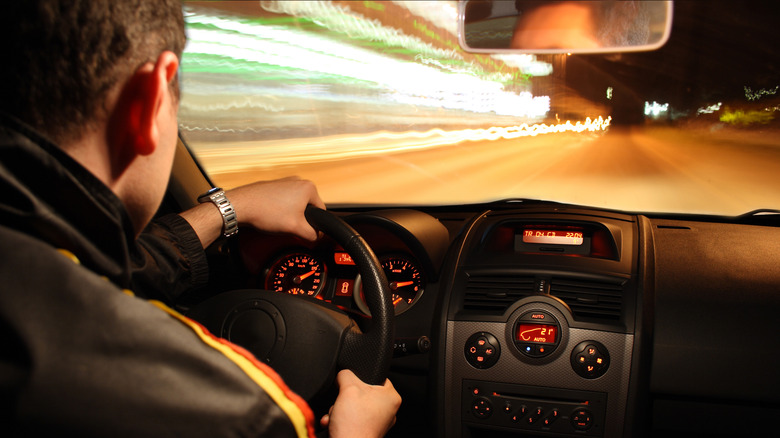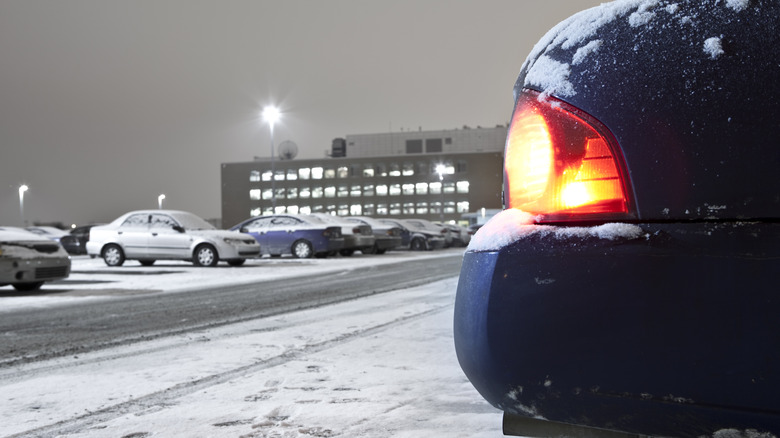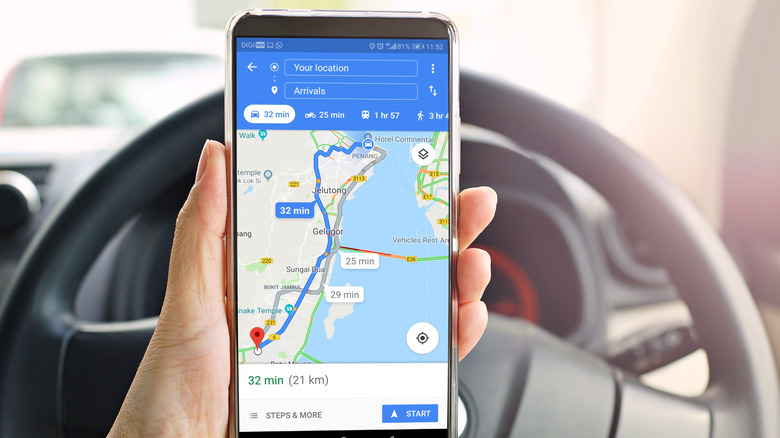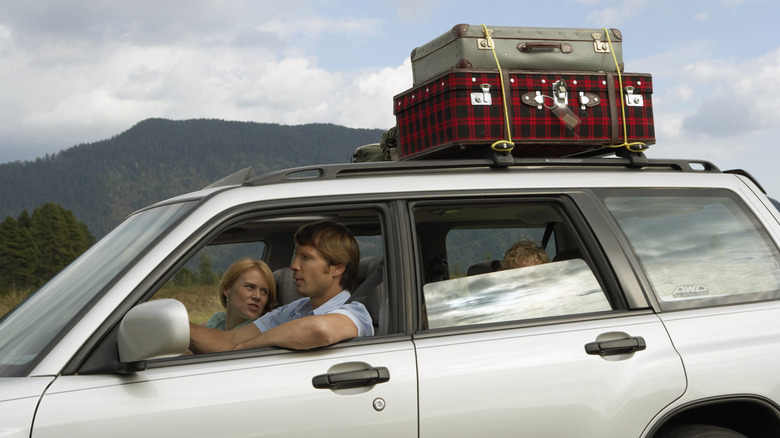13 Tricks To Save You Money When Buying Gas
The U.S. national average for the price of gas was just over $3 per gallon coming into 2024. The average cost of gas will rise to $3.38 per gallon before leveling out, with Americans saving $32 billion on gas over last yer. Still, concerns over Middle East politics, including tensions between Israel and Hamas, the OPEC alliance between the Saudis and Russia — not to mention the impact of Russia's ongoing invasion of Ukraine — could throw a potential wrench into hopes for low gas prices.
Climate change is another wildcard where the potential for natural disasters, spurred on by a warming climate, could throw gas prices into overdrive. For instance, Louisiana's Hurricane Ida blew through 30 million barrels of oil in the Gulf of Mexico in 2021, while Hurricane Harvey laid waste to 20% of U.S. refinery production in 2017, leading to gas prices rising 1.3 cents to 17 cents per gallon, respectively.
Being prepared is always key to coming out ahead. Even though gas prices are projected to be lower, one lesson from the pandemic is to expect the unexpected. This a list of ways to save money when buying gas will help you keep more in your emergency fund instead.
Pay attention to your fuel
The first thing to pay attention to is the fuel you're putting in your gas tank. Going over your car's user manual is the best way to discern the best fuel for your car. If your car doesn't need the most expensive premium fuel to run efficiently, it doesn't make financial sense to pay for it at the pump. Fuel is graded based on octane strength — the measurement of your fuel's potential to detonate when mixed with air — with regular fuel coming at 87, midgrade at about 89, and premium coming at 91 to 93. Using the wrong gas in your car is not only expensive but can damage your engine or make it much less fuel-efficient. The exception to this rule is when your user's manual states your car is "premium fuel recommended" which means your engine can process regular, premium, and mid-grade fuels efficiently.
The other thing you ought to consider is when you buy gas. Fueling up on the cheapest day of the week to buy gas could save you $50 to $100 per year on 12 gallons of gas per week.
There's an app for that
Sometimes it can feel like there's an app for everything, and saving money on gas is no different. GasBuddy boasts $3 billion in realized savings for North American motorists through several tools, including regional price charts, maps, and fuel logs. A fuel demand report predicts weekly consumer demand for fuel for over 150,000 gas stations across Canada and the United States. Gas Guru allows you to compare gas prices in your area and find the cheapest fuel prices nearby, while also helping you save your favorite locations for affordable gas. The Apple store offers Wex Connect, an app that also seeks out the closest and most affordable gas in real time, and includes EV charging ports for hybrid motorists. It has a 4.5 out of 5-star rating on the app store.
Even when you're not the driver, you can still feel the impact of gas prices. According to Restaurant Business, Uber Eats opted to pass on the cost of gas to customers in the form of a $0.35 to $0.45 addition to their bill in 2022. Meanwhile, DoorDash partnered with GasBuddy to find their delivery drivers the cheapest gas in their delivery area straight from their Dasher app, which also builds reward points they can redeem for vehicle maintenance. This offsets the cost of gas for the driver and you, so now you know which gas apps and food delivery apps can save you money on gas.
Embrace credit card rewards
At least one little-known credit card perk you should be taking advantage of is rewards and cashback options you can access at the gas pump. However, you should actually skip the credit cards marketed directly for gas and instead opt for a cashback or rewards credit card. According to Consumer Reports, the current model has gas cards taking five cents to 10 cents off each gallon, while cashback cards can offer five percent off your total purchase. In other words, 10 gallons of gas at $4 per gallon could save you up to a dollar on a $40 charge with a gas card, or a cash-back rewards card could save you as much as $2 on the same 10 gallons. Even when gas prices fluctuate, you always come out on top with a cashback credit card.
Also, while a debit card may allow you to make a quicker payment with no interest attached, credit cards allow you to defer the true cost of paying for gas by 25 days, thereby avoiding interest penalties by paying on time — while also limiting the potential for fraud since most credit card companies offer fraud and identity theft protection — making cashback rewards through credit cards a viable way to save money at the pump.
No credit? Use cash
If you're in the throes of building or rebuilding your credit, a credit card may not be an option for you. However, you should probably think twice about using your debit card to pay for gas anyhow. Fraud in the form of skimming — a criminal practice where a concealed device lifts information from your debit card — is a real concern. It's also avoidable if you use cash. Also, although some gas stations offer discounts on the price of your gas if you pay with cash, you could still be charged as much as 24 cents per trip to the pumps in transaction surcharges.
Even if a potential for fraud and lost change doesn't make you lose any sleep, a hold on your card purchases might. Since there's no way for a gas station to know how much gas you'll put in your tank before driving away, specifically in situations where you pay for gas by swiping your card at the pump, the station will put a preauthorized hold on your card. That hold can go as high as $175 and won't be released until the transaction clears. The danger here is the hold can be placed on your card for a few hours or a few days after you've refueled. So if you had $200 to your name and had other plans, you may have to put those plans on hold along with your money.
Put a lid on it
The plastic lids you have to unscrew to fill your tank are called gas caps. These keep fuel and vapors from escaping your vehicle, especially in the case of accidents, hard turns, or driving up or downhill, while also keeping fumes from polluting the environment. They also protect your gas tank from dirt or grit which can affect the running of your engine. If your "check engine light" is flashing or you catch a whiff of gasoline emanating from the rear of your vehicle, you should probably get your cap checked since these are indications of a loose or missing gas cap. If you have lost or damaged your gas cap, in a pinch you can stuff a rag into the hole to keep the tank free from the aforementioned environmental debris and keep gas and fumes from leaking out of your vehicle.
A loose or lost gas cap can cause your vehicle's engine to misfire, eventually causing your car to either stall or just not start at all. It can also affect your vehicle's fuel efficiency since the vapors escaping from your vehicle represent lost gas mileage, both of which can lead to costly results like more trips to the gas station or a mechanic shop.
Don't be in a big rush
It should go without saying, but having a lead foot on the accelerator can have a big impact on the efficiency of your gas mileage. Tire and air resistance create drag on a vehicle traveling over 50 mph, costing the driver an extra 30 cents per gallon for every five mph based on a $4.32 average per gallon. By just moderating your speed at a pace of five to 10 mph, you can optimize your fuel consumption by up to 14%. If you're gunning it on the highway, that negative effect on your gas mileage can go up as much as 30%, so aside from safety and respect for the law, another reason to observe the speed limit is that it can save you money.
A study conducted by the National Renewable Energy Laboratory and Volvo found that adaptive cruise control — a form of cruise control that helps your vehicle adjust its speed for slower vehicles ahead, while also maintaining an even pace on a clear road — offers anywhere from 5% to 7% savings in gas consumption. Whether you or your car is doing the driving, lower your speed and take it easy on the gas pedal.
Don't let your engine idle
According to the U.S. Department of Energy, the environmental impact of 250 million American vehicles — already pumping out 30 million tons of carbon dioxide per year — not unnecessarily idling is the equivalent of taking five million of those vehicles off the road. It's easier than ever to limit idling emissions, even in winter, due to higher-performance catalytic converters that kick in faster to help vehicle engines warm up quicker.
Driving an older vehicle that benefits from running the engine before driving in winter might be the only exception to this rule since this becomes a safety issue. On the other hand, the heating system in newer vehicles upcycles heat generated by your engine without burning additional gas, so as long as the car is in motion while your heat is on you won't lose anything in gas mileage. If you were to pay $2.90 for a gallon of gas, leaving your vehicle idle for 10 minutes would equate to up to 41 cents of gas, with a bigger engine costing you even more. It would be cheaper to keep a space heater in your vehicle since an hour of running one would only cost you 13 cents. Regardless, no matter the season, the best way to waste gas is to be idling with your engine running.
Walk or bike more
The total average annual miles driven by individual Americans across different genders and age groups in 2022 was 13,476 miles. Aside from being bad for the environment, it's also not great for your wallet. If the average U.S. motorist decided to walk or ride their bike to destinations under a mile instead of driving, that would reduce about 10 billion miles, two million tons of carbon dioxide, or $575 million in fuel costs per year based on gas price of $2.50 per gallon. As this calculation demonstrates, the gas savings only get greater as the cost of gas increases.
Aside from the health and environmental benefits of less driving, walking costs you nothing while just owning a vehicle in America can run you an average of $9,000 in gas and maintenance annually. The health benefits of walking can also offset future healthcare costs associated with medical issues caused by unhealthy, sedentary lifestyles like diabetes or heart disease. In fact, walking to work can sharpen your cognition and lower your stress levels, which is the opposite of what happens while sitting in your car stuck in morning traffic.
Consider public transit or carpooling
Taking turns driving and sharing rides with friends or colleagues can not only save you money on car maintenance — driving less creates less stress on your vehicle — but also on gas. If you split $180 per month in fuel costs in a three-person carpool, you could save $120 per month on gas, or the equivalent of $1,440 per year. Hitching a ride to and from work five days a week at a cost of around $60 per month is about $2.40 a day. Try taking a cab or even public transportation, to and from work, for about that much.
Although carpooling has a slight edge in terms of convenience, that doesn't disqualify public transportation as a viable alternative to driving. With the disclaimer that not all public transit systems are created equal, and with only 45% of the U.S. population not having access to decent public transportation, an average of $60 for a monthly pass makes this an alternative to driving and burning gas money if you do. Consider this latter option if carpooling is out of the question or public transit is relatively nonexistent in your area.
Know where you're going
Do you know where you're going to and do you like the things that life is showing you? It's more than a song lyric. If you don't have any idea where you're going, you aren't going to like what your navigational challenges are costing you on gas. Your vehicle or phone has a GPS and we suggest you get very comfortable using it before traveling to strange or unfamiliar locations. All the time you spend driving around aimlessly, U-turning and retracing steps to drive through the same intersection in a different direction, is gas going up in smoke.
Before you even leave your home, establish the best route to your destination using a navigation system like Apple Maps, and use an app like GasBuddy or Google Maps to figure out where the nearest, cheapest gas station is along your route. Better still, Google Maps now offers eco-friendly routing, a new feature that allows you to chart the most fuel-efficient routes to your destination with the ability to input tolls, ferries, and highways as obstacles to avoid. Don't drive faster or longer. Drive smarter.
Chill on the AC in summer
Unlike your vehicle's heating system, air conditioning has a direct effect on your gas mileage. The U.S. Department of Energy views air conditioning in hot weather as the primary factor in poor overall fuel efficiency, with running air conditioning costing motorists an average of 25% more in gas usage, or worse for EVs and hybrid vehicles. Rolling down your windows to feel the breeze in your hair can be another bad idea for saving on gas. The collision of fast-moving air and your vehicle creates wind resistance, otherwise known as "drag," that causes your vehicle to work harder to maintain its speed by burning more fuel.
That said, there are exceptions to the rule. Newer model cars tend to be more aerodynamic, which means drag rarely becomes an issue at speeds below 80 mph for smaller vehicles or 40 mph for larger vehicles, so you could keep your windows down without losing too much in fuel efficiency. Where air conditioning is concerned, if you're driving above the aforementioned speeds, you would be better off rolling up the windows and using the air conditioning to avoid drag.
Go green with an EV
You may want to think twice before buying a new car, especially if it's gas-powered. According to Consumer Reports, electric vehicles (EVs) may cost $12,000 more than internal combustion vehicles but they can save you money in the long term. For one thing, EVs tend to spend 50% less time in the mechanic shop, which reduces the amount you'll spend on overall maintenance. If you live in a region where electricity is cheaper than gas, then an EV makes good financial sense. There are up to $7,500 in tax credits for purchasers of EVs with additional state-incentivized rebates of hundreds to thousands of dollars based on where you live.
According to the Natural Resources Defense Council, it cost an average of $1,117 per year to keep vehicles powered by gas in 2018, while it only cost $485 to keep electric-powered vehicles on the road and running optimally. This tracks with another Consumer Reports study suggesting EVs cost 60% less than gas-powered vehicles to fuel up, and are 2.6 to 4.8 times more efficient over a mile of travel.
Lose the excess weight
Nothing hurts the aerodynamics of your vehicle like extra weight. As per the U.S. Department of Energy, roof cargo, much like an open window at high speeds, can cause the sort of wind resistance that causes your vehicle to work harder and therefore burn more gas. Large roof racks with cargo can impact your mileage by anywhere from 2% to 25% depending on whether you're driving in the city, the highway, or on the interstate. Excessive weight in your vehicle can limit your miles per gallon by 1% for every extra 100 pounds or more for smaller vehicles. Perform an audit of everything taking up space in your back seats and trunk when you've got some time, and get rid of any unnecessary dead weight in your vehicle. Using your vehicle as mobile storage isn't going to do your vehicle's overall health any favors, nor will it save you any money on gas.
